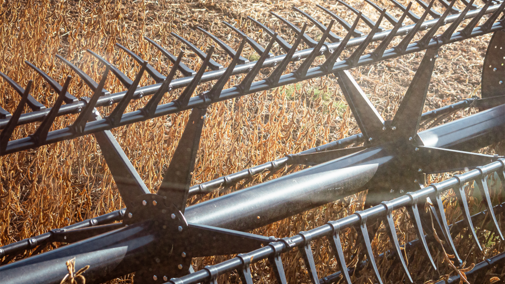Frosted Sorghum and Prussic Acid
Colder temperatures have already caused some freezing in the Great Plains and Midwest. What have those temperature done to the forages and how can livestock be kept safe?
Short-term freezing temperatures may cause sorghum species such as sorghum-sudangrass or any grain (milo) or forage sorghum to become lethal to livestock. Prussic acid forms when plant cell membranes are broken due to freezing and allows the chemicals in the cells to mix. This forms a cyanide compound that can be deadly to livestock if consumed. Sudangrasses have the lowest risk while forage and grain sorghum have the highest. The millet species do not have prussic acid issues.
The good news is that after seven days, the toxic chemicals dissipate into the air. Every time there is a freeze (without temperatures low enough to completely kill the plants), that seven-day clock resets, just like the 30-minute lightening delay at football games. The new growth on sorghums that have had frost damage are very dangerous as they have the highest concentrations of prussic acid. Remember again, mechanically harvesting these forages as hay or silage allows the prussic acid to dissipate, making consumption safe.
If there is a chance of freezing temperatures, remove livestock from the pasture and wait the seven days before grazing once again. The hours immediately after a frost have the highest level of toxic compounds. If there is regrowth in the days after a freeze, wait to begin grazing until those shoots are 15-18 inches tall or five to seven days after the plant has been completely killed by the frost. If sorghum family plants have had extra nitrogen applied or are growing in high nitrogen soils, the risk of prussic acid is even higher.
Soybean Residue for Forage
Bean fields are opening up after harvest and cows may be moving in to get them off pasture when other forage options are unavailable. Soybean residue or stubble can occasionally be baled and used in rations. Before we use it, however, we need to set expectations. Is soybean residue a quality forage?
Soybeans themselves are very high in protein and fat. They are about 40% crude protein and about 20% fat, which is why soybean residue can be perceived as great feed. With such a high fat content, too may beans can cause issues with the rumen, so any spilled piles should be cleaned up before animals are sent out to graze.
Soybean residue itself, however, has a much different feed composition. The empty pods and stems contain only 4 to 6% CP and the TDN is only 35 to 45%. The leaves are slightly higher in protein at 12% but break down quickly after plants reach maturity and harvest has taken place.
These feed values will not begin to support the nutritional requirements of a dry cow even if there is some grain left in the field. So, while soybean residue can be grazed and can be used to move animals from overused pasture, supplemental feed is required.
When baled, soybean residue can be worked into a ration as a roughage source if other sources are less available. Just like grazing, baled soybean residue does not even come close to providing the feed value of cornstalk bales. Producers should also consider if removing litter from already lightly covered bean fields is worth the effort.
Soybean residue may not be the quality we often think. Residue alone will not even meet a dry cow’s nutrient requirements, so supplementation will be need.

